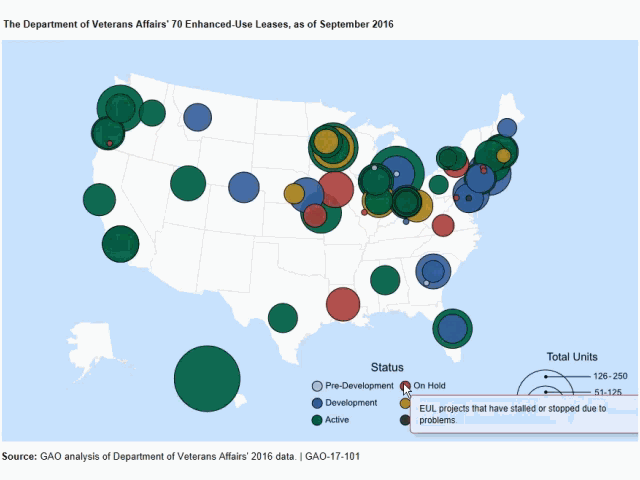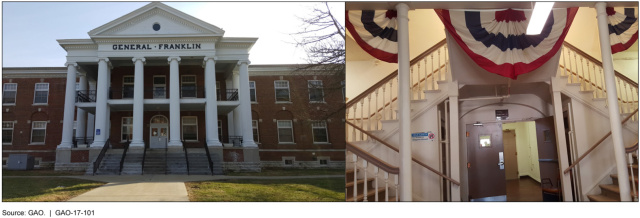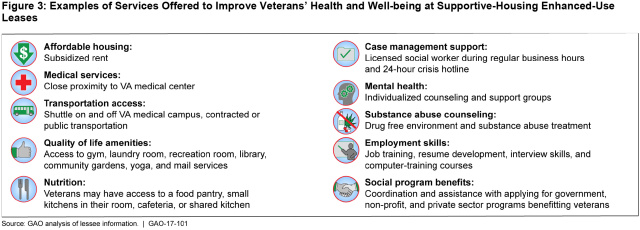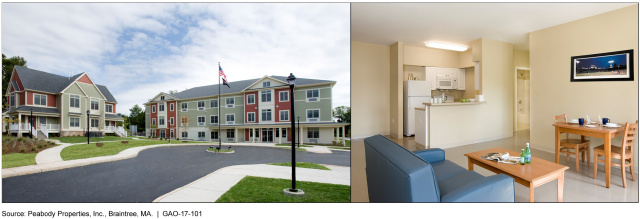Housing with Supportive Services for Veterans
The Department of Housing and Urban Development estimated that nearly 40,000 veterans were homeless as of January 2016—making up about 10 percent of all people experiencing homelessness.
To help, the government is converting unneeded federal property into supportive housing for some of these vets. Today’s WatchBlog takes you inside some of these properties and shares what the Department of Veterans Affairs needs to do to improve its supportive housing program.
(Photos of supportive housing in Dayton, Ohio. Excerpted from GAO-17-101)
Supportive housing
Three major health risks contribute to veteran homelessness: mental health problems, substance abuse, and chronic illnesses.
Supportive housing is widely recognized as a key solution for persistent veteran homelessness since it can provide services that address many of these problems.
(Excerpted from GAO-17-101)
VA and HUD teamed up with private and not-for-profit partners to convert surplus federal property into supportive housing. This housing was created using “enhanced-use leases.” This type of housing provides vulnerable vets with a place to live on a VA medical campus—where they can access an array of community and medical services.
What does living on a VA medical center campus look like?
Here’s one in New Jersey:
Another in Illinois:
And one in Minnesota:
(Photos excerpted from GAO-17-101)
Our interactive graphics show the location and status of these units, as well as each state’s population of homeless veterans, as illustrated below.
 (Excerpted from GAO-17-101)
(Excerpted from GAO-17-101)
Future housing
VA plans to develop additional supportive-housing using enhanced-use leases. But we found that VA officials did not completely document their decision-making process for selecting properties to convert. This means that VA can’t build on lessons learned when identifying and developing future properties.
We also found that VA has some outdated policies. For example, it doesn’t specifically provide guidance on how to determine whether a proposed project meets the needs of homeless vets. We made recommendations to address both of these issues.
To learn more, check out our full report.
- Comments on GAO’s WatchBlog? Contact blog@gao.gov.
GAO Contacts
Related Products

GAO's mission is to provide Congress with fact-based, nonpartisan information that can help improve federal government performance and ensure accountability for the benefit of the American people. GAO launched its WatchBlog in January, 2014, as part of its continuing effort to reach its audiences—Congress and the American people—where they are currently looking for information.
The blog format allows GAO to provide a little more context about its work than it can offer on its other social media platforms. Posts will tie GAO work to current events and the news; show how GAO’s work is affecting agencies or legislation; highlight reports, testimonies, and issue areas where GAO does work; and provide information about GAO itself, among other things.
Please send any feedback on GAO's WatchBlog to blog@gao.gov.








